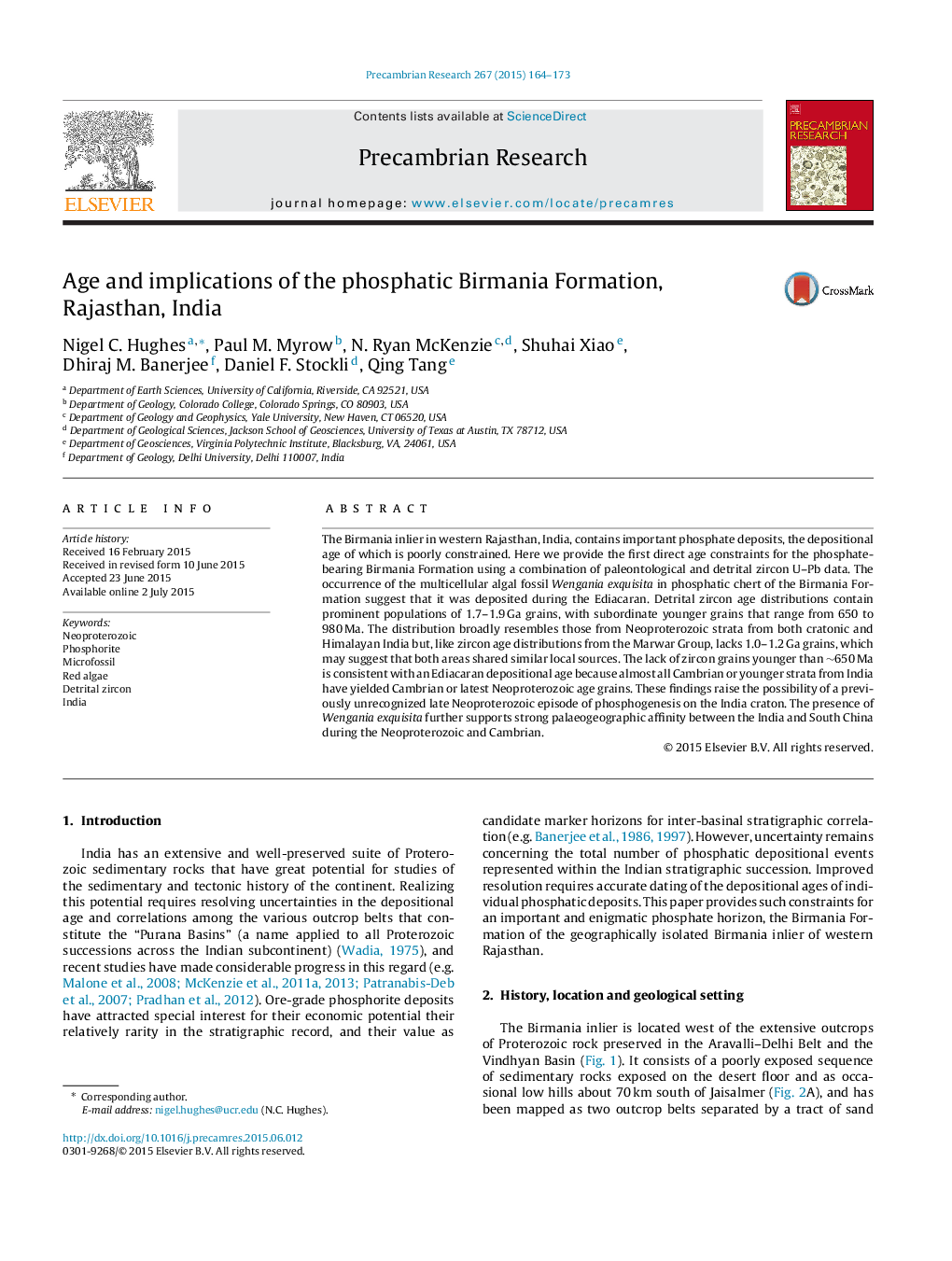| کد مقاله | کد نشریه | سال انتشار | مقاله انگلیسی | نسخه تمام متن |
|---|---|---|---|---|
| 4722612 | 1639608 | 2015 | 10 صفحه PDF | دانلود رایگان |
• The Birmania Formation of Rajasthan is chronostratigraphically directly dated.
• The multicellular algal fossil Wengania exquisita suggests Ediacaran age.
• Detrital zircon age distributions are consistent with Ediacaran age.
• Wengania exquisita supports palaeogeographic linkage of India and South China then.
The Birmania inlier in western Rajasthan, India, contains important phosphate deposits, the depositional age of which is poorly constrained. Here we provide the first direct age constraints for the phosphate-bearing Birmania Formation using a combination of paleontological and detrital zircon U–Pb data. The occurrence of the multicellular algal fossil Wengania exquisita in phosphatic chert of the Birmania Formation suggest that it was deposited during the Ediacaran. Detrital zircon age distributions contain prominent populations of 1.7–1.9 Ga grains, with subordinate younger grains that range from 650 to 980 Ma. The distribution broadly resembles those from Neoproterozoic strata from both cratonic and Himalayan India but, like zircon age distributions from the Marwar Group, lacks 1.0–1.2 Ga grains, which may suggest that both areas shared similar local sources. The lack of zircon grains younger than ∼650 Ma is consistent with an Ediacaran depositional age because almost all Cambrian or younger strata from India have yielded Cambrian or latest Neoproterozoic age grains. These findings raise the possibility of a previously unrecognized late Neoproterozoic episode of phosphogenesis on the India craton. The presence of Wengania exquisita further supports strong palaeogeographic affinity between the India and South China during the Neoproterozoic and Cambrian.
Journal: Precambrian Research - Volume 267, September 2015, Pages 164–173
